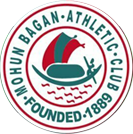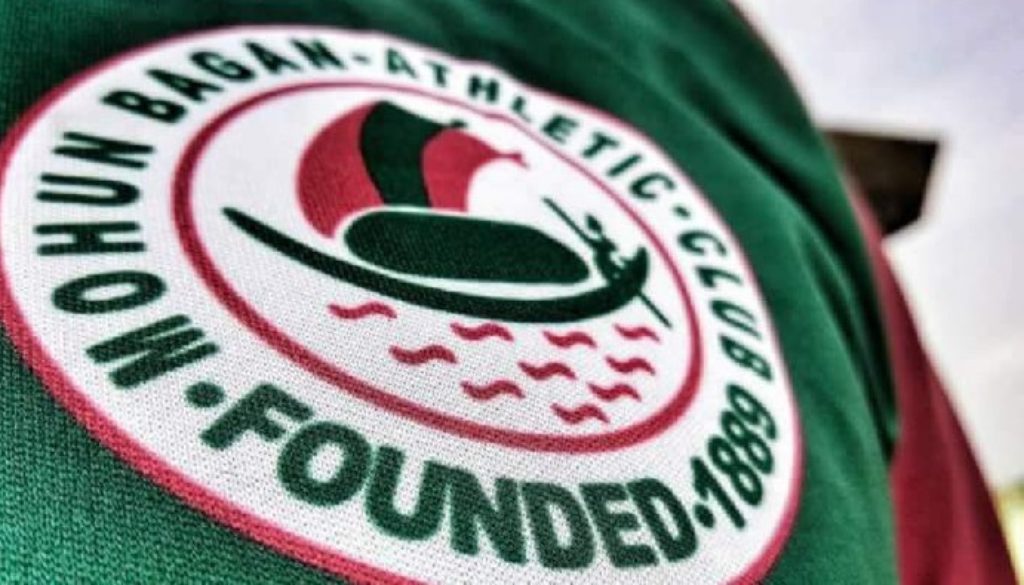Mohun Bagan: formation of a Club amidst Sabha and Samities
Subhransu Roy : The day was December 8, 2012. Apparently it was a jovial evening for the English cricket fans who were returning after fourth day’s play of the third test between India and England. Perhaps in that dramatic battle of 22 yards, England had a slight edge over their rivals. Mainly to spend spare time, a few over enthusiastic English supporters visited the Mohun Bagan tent on their way back to their hotels. Incidentally, the day was the penultimate day before much hyped Kolkata derby. So, some members and supporters of the club, tagged with a revered epithet ‘National’ before its name, were also present in the tent to collect their tickets. Suddenly it was seen that few of the English fans took the endeavor to stand in the queue to collect tickets of Kolkata derby. One elderly Englishman was overheard saying to his young compatriots: “Do you guys know the history of the club?” Then he started elaborating in a nutshell the days of Raj and the inception of the club by some Bengali middle class youths with western education who took the pain to challenge the colonial rulers on the soccer field out of nationalistic zeal. And, consequently the ground to spawn the seed of nationalism and craving for autonomy in the mind of Country’s youth came into shape.
Again it was heard amidst the din made by the supporters that the gentleman, with probably a guide book on the City in his hand, was asking his companions whether they had an iota of idea about the foundation day of the famous Indian football club…when his question remained unanswered he repeated with an extra effort: “It was established in 1889 when the city had the glory of being the capital of British India”.
Actually that elderly British knowingly or unknowingly had thrown light on the almost forgotten memory of a historically significant day of our colonial past. It is true that some economically solvent Calcuttans gathered in the spacious drawing room of ‘Basu Villa’ nestled in 14 Balaram Basu Street, which belonged to the erudite Bengali barrister of that period Bhupendranath Basu. He was also the leader of the first rung of Indian National Congress. He, along with some of his relatives and neighbor Mitras and Sens took the decision to found Mohun Bagan Sporting Club. Apart from them, some established and successful denizens of the city were present in that historic parley. Then, Kolkata was precisely 138 years old capital of British India, a jewel on the queen’s crown. The city was quite naturally the administrative and strategic hub of the sub-continent.
Already, at that time, the city could boast have a few already established football clubs as the game imported from Europe could catch the imagination of the middle class segment of the citizenry. There were other sporting centers too that were dedicated primarily to body building, deemed to be the first step for character building as well as nation making process. Post Hindu Mela, the 19th century youth of the city was agog with newly found passion to wipe out the pejorative label ‘pusillanimous and effeminate’ imposed upon the whole of the Bengali community by the colonial masters to create a psychological pressure out of the supremacist attitude. To realize that goal, already a few van guards opted for football instead of attending traditional wrestling ring (Akhra) with the aim to compete with the whites and to defeat them in their own game. They made their present felt regularly in Kolkata Maidan by practicing and honing their skills and control on the leather.
Coincidentally, at that juncture, Swami Vivekananda delivered his memorable dictum: “It is better to play football than studying Geeta to attain salvation”. The comment had been etched forever on the collective consciousness of the subjugated nation since then.
Notably, in 19th century of the last millennium, the Bengali middle class gentry not only dabbled in establishing various sporting organizations – gymnasium, football and athletic clubs with the motive of boosting the sagging morale of a nation in colonial shackles – but, at the same time, they founded some civil organizations (Sabha and Samities) with the overt or hidden political agenda. The network of such societies started fanning out across Kolkata and beyond to voice protests against the injustice and misrule perpetrated by the ruthless British. Land Holders Society (1838), British Indian Association (1851), Indian Association (1876), National Conference (1883) and some similar organizations were founded during this socio-politically sensitive period. Against such a fertile backdrop, the founders of Mohun Bagan club took the initiative to take up the challenge to compete with the rulers in their own game. In the second year of inception, the club changed its name to Mohun Bagan Athletic Club following the suggestion put forward by the revered professor of Grammatology in Presidency College Prof. F.J. Rhow. Formerly it was known as already we have mentioned as Mohun Bagan Sporting club. Not only that, the old emblem of the club depicting a tiger sitting under a leafy tree underwent a prominent change, too. The emblem, intact till date, metamorphosed to a comparatively mellowed ‘boat with fluttering sails’.
Starting its illustrious and long journey as an athletic club, Mohun Bagan focused mainly on football and in 1911 the club made history by lifting IFA shield by consecutively defeating four army teams along with a college team. This was not a simple feat. Rather it was recorded in the annals of colonial India as a watershed by becoming a pivotal factor in spreading the anti-colonial message and newly found confidence amongst the masses hitherto stricken with a defeatist mentality born out of prolong domination by the aliens. In the entire discourse of 1911 Shield victory, the point which has not yet been mentioned with its due importance that, during those days, Mohun Bagan Athletic club was leading the way in terms of sporting infrastructure and administration compared to Sovabazar, National, Kumortoli and other local clubs. And before the IFA Shield success in 1911, Mohun Bagan was already an esteemed name in the domestic football winning the Trades cup five times, Cooch Behar Cup four times, Lakhsmibilash Cup three times and Gladstone Cup four times respectively.
– By Subhransu Roy (Professor, Football Historian, Writer & A proud mariner)

